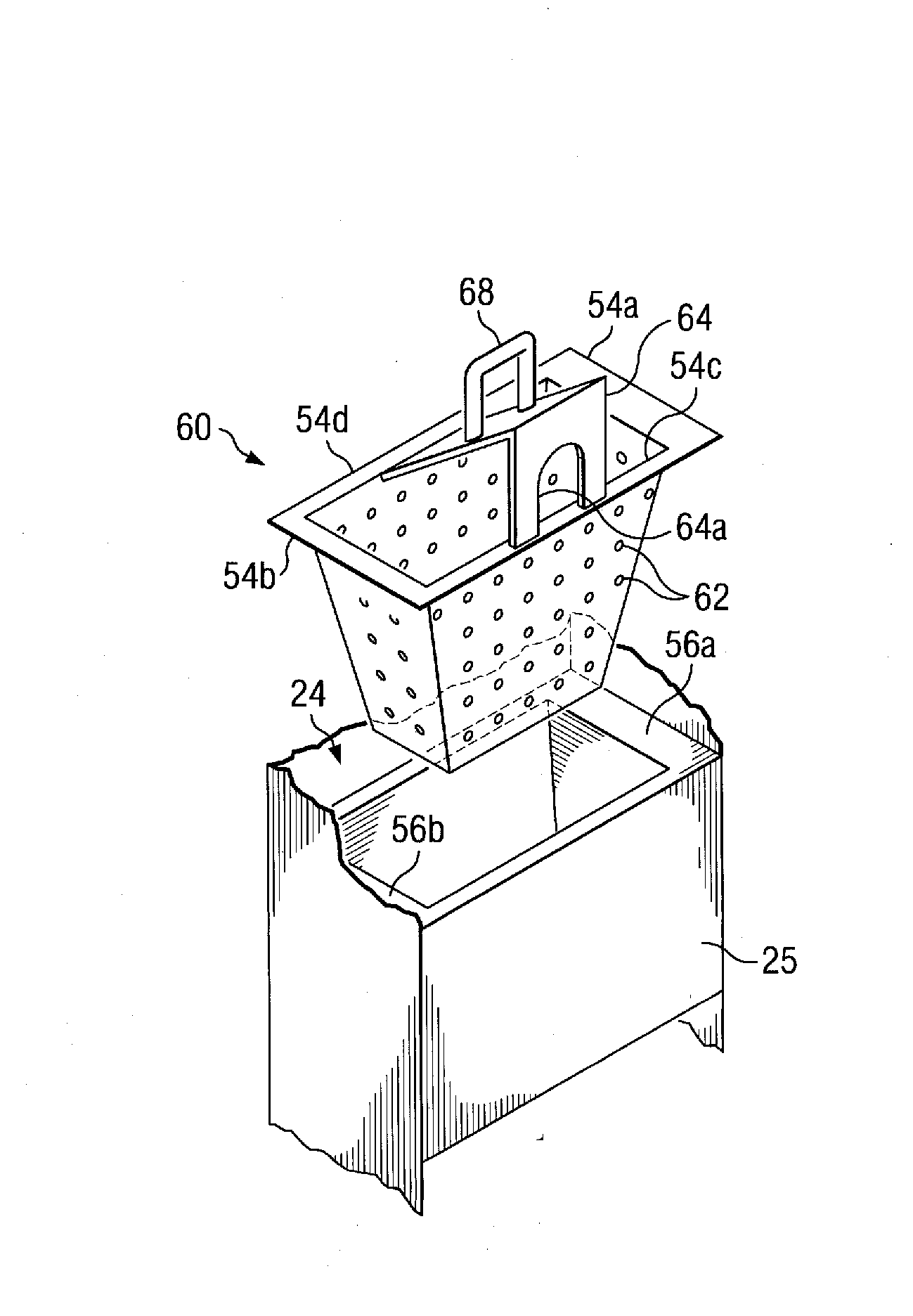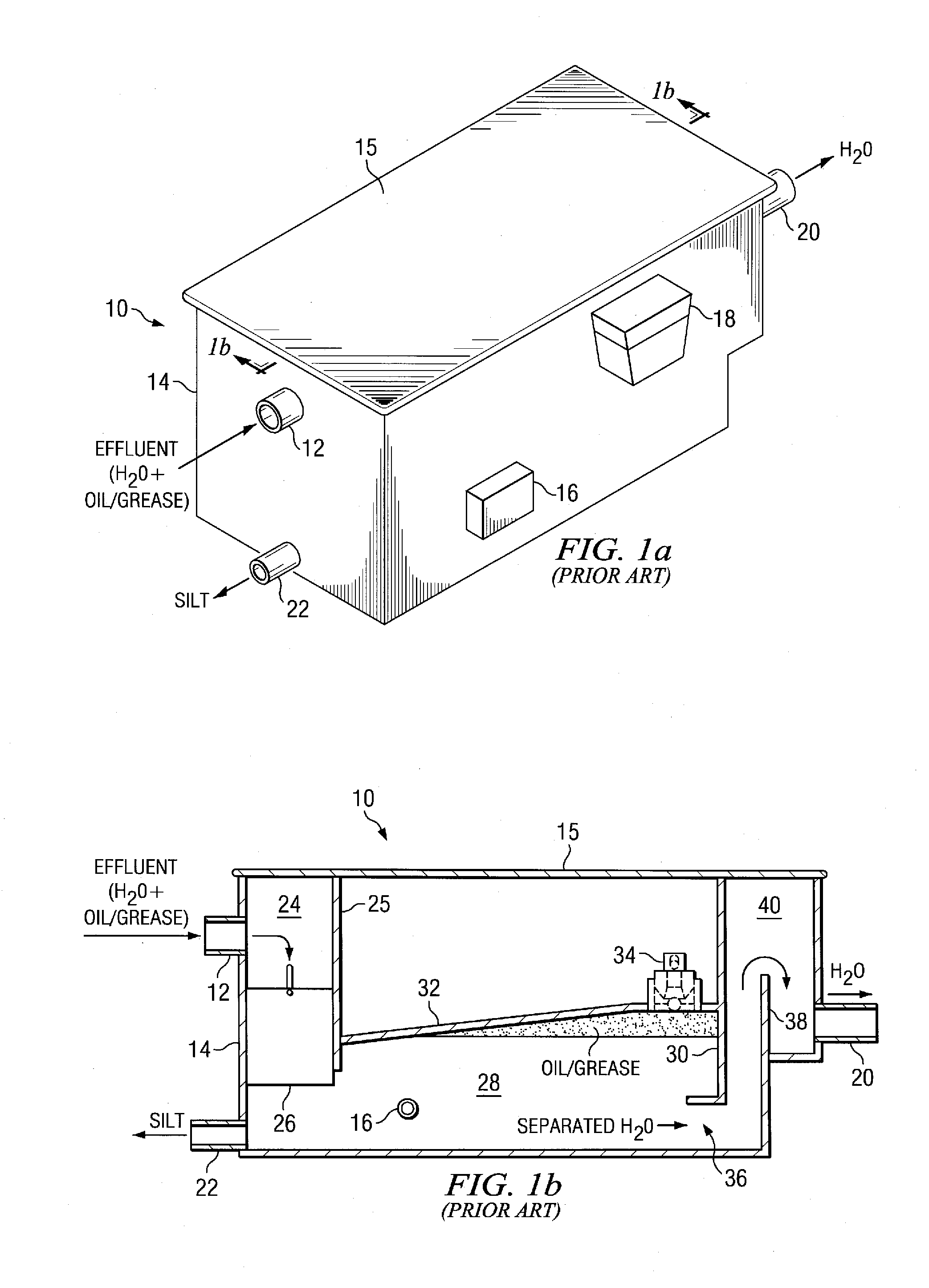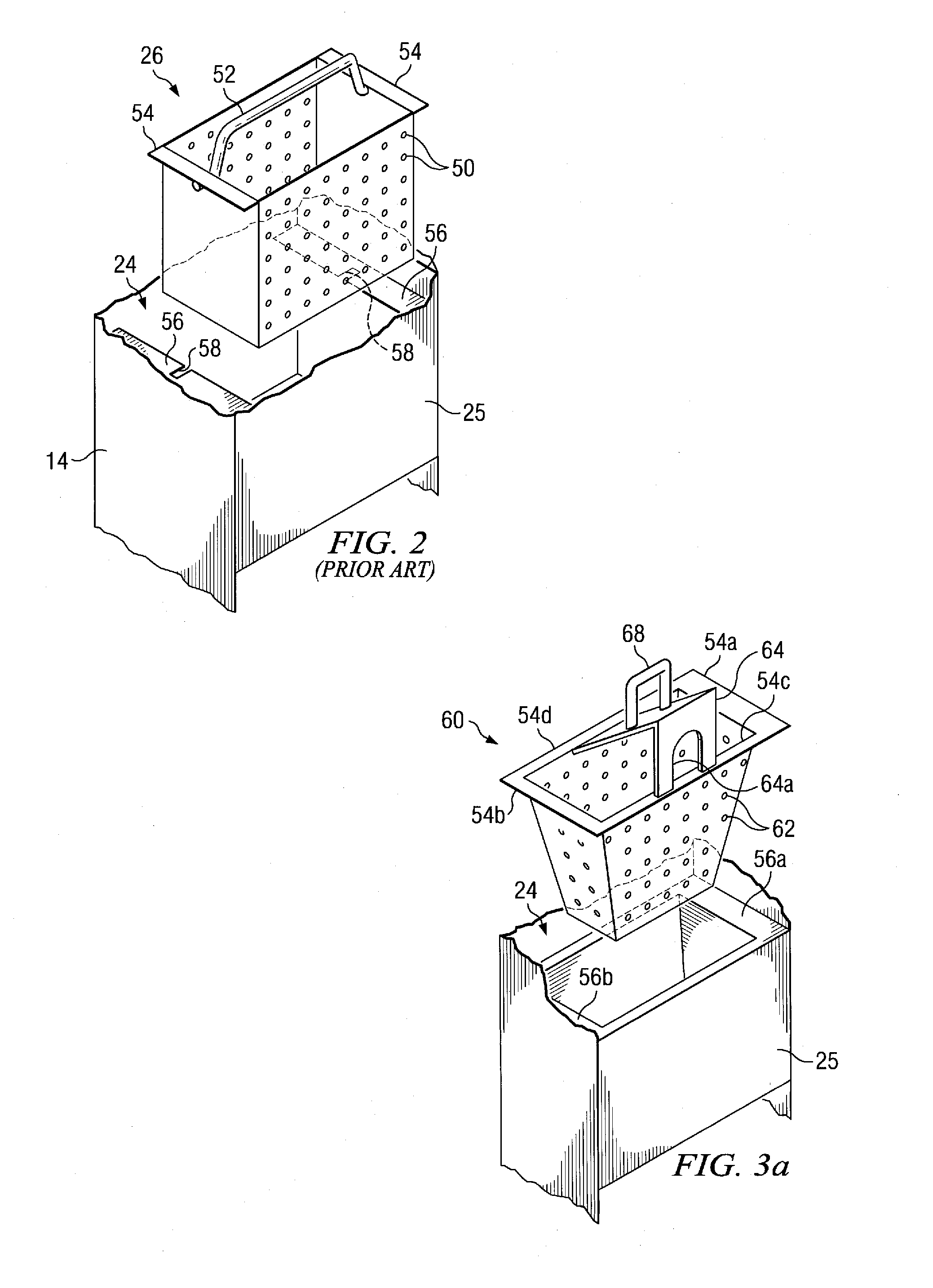Separator for immiscible liquids
a liquid separation and liquid technology, applied in the direction of filtration separation, moving filter element filter, separation process, etc., can solve the problems of expensive remediation and blockage, and achieve the effects of improving heating and silt removal, improving separation, and low friction surfa
- Summary
- Abstract
- Description
- Claims
- Application Information
AI Technical Summary
Benefits of technology
Problems solved by technology
Method used
Image
Examples
Embodiment Construction
[0042]The present invention is best understood in relation to FIGS. 1-14 of the drawings, like numerals being used for like elements of the various drawings.
[0043]FIG. 2 illustrates a prior art filtration basket 26. The basket has a front side (facing the housing at inlet 12) and a back side (facing control plate 25) that is perforated with holes 50, as is the bottom of the basket. Since the front side is relatively flush with housing 14 and the back side is relatively flush with control plate 25, and the ends are not perforated, almost all of the effluent flow is through the holes in the bottom of the basket. Over time, food particles will accumulate on the bottom of the basket 26, severely limiting flow into the separation chamber 28.
[0044]Other problems concern removal and replacement of the basket 26. The prior art uses a handle 52 which terminates through holes on either side of the basket. The basket 26 has flanges 54 on either side; flanges 54 normally rest on support clips 5...
PUM
| Property | Measurement | Unit |
|---|---|---|
| Length | aaaaa | aaaaa |
Abstract
Description
Claims
Application Information
 Login to View More
Login to View More - R&D
- Intellectual Property
- Life Sciences
- Materials
- Tech Scout
- Unparalleled Data Quality
- Higher Quality Content
- 60% Fewer Hallucinations
Browse by: Latest US Patents, China's latest patents, Technical Efficacy Thesaurus, Application Domain, Technology Topic, Popular Technical Reports.
© 2025 PatSnap. All rights reserved.Legal|Privacy policy|Modern Slavery Act Transparency Statement|Sitemap|About US| Contact US: help@patsnap.com



